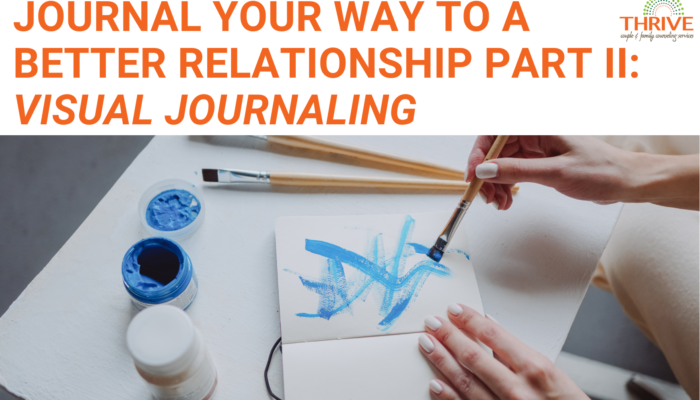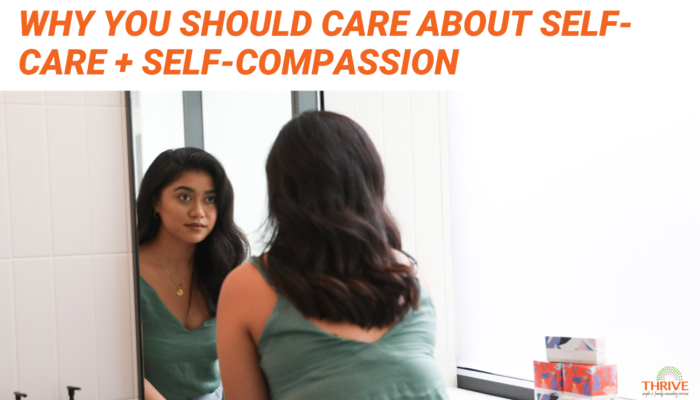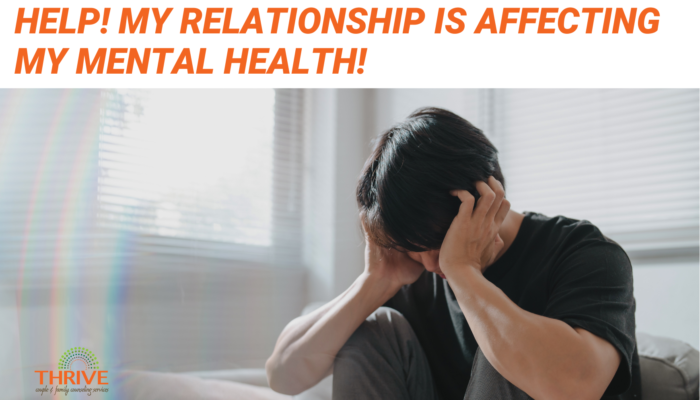“This pouring thoughts out on paper has relieved me. I feel better and full of confidence and resolution.” – Diet Eman
In our last post on journaling, we discussed how journaling can help you learn about yourself. In this post, we’re diving into the artistic and expressive side of journaling with Visual Journaling.
What is Visual Journaling?
Visual Journaling does not require you to have the ability to draw, paint, or even color in the lines. It’s simply another method to get your feelings on paper. Sometimes, words get stuck in our heads, or we can’t quite find the phrase to describe how our relationships feel. But a quick stick-figure drawing, putting colors to a page, or even free-jotting emotional phrases can help us get to the bottom of what we really want.
As we participate without evaluating our creative abilities, we are also free to view our ideas from the outside, from a place of non-judgmental observing and understanding.
Let’s explore our relationships, view of ourselves, others, and life experiences in a new way through the art journal!
What are the Benefits of Visual Journaling?
Improved Mood
Visual journaling can help us sort out our emotions and figure out what’s holding us back. We can write the things we are grateful for, list out the things that burden us, or draw how we feel about ourselves in our relationship. Journaling can help us “hack into” our minds and hearts.
We can use art journaling to unburden stressors and heavier emotions so we can walk more lightly into our day. As we journal, we can be more aware of the positive as we work through weightier emotions.
Inner World
As Emotionally Focused Therapy asserts, learning about our View of Self is key to figuring out the cycles we find ourselves in within our relationships. Creating visuals and charts can help us maximize our therapy learning and prepare us to share authentically in session. Learning about our personal strengths and reasons for using past tools can increase confidence, acceptance, self-compassion, and ultimately hope for the future of our relationships.
Interpretation
Visual journaling can help us look at ourselves and our emotional responses from a different perspective. Through art, we can construct complex meanings as we decipher how we see others and how we see ourselves. We can locate the overarching story we’ve been told about how we should live our lives. We can understand and discover our action tendencies and understand our physical sensations better.
Because it is unconscious in nature, visual depictions of our inner states can be a doorway to interpreting and therefore breaking problematic relationship cycles.
Imagination
As adults, many of us are told to let go of creative exploration, yet it may be the very thing to get us out of a rut. This could include ripping out magazine images and words, displaying emotions through smiley faces, free drawing, or coloring as we listen to music. It could just be fun to allow ourselves to visually express our inner worlds and seek out our dreams, goals, and intentions for the year. And at the end, we may have a work of art to hang on the fridge.
What Materials do I need for Visual Journaling?
You don’t need an artist’s studio to have a great experience. Look for things you already have around the house or make a quick run to the store. Here are some things you could use:
- Pen or Pencil
- Markers or Colored pencils
- Crayons or Pastels
- Watercolors or Paints
- White or silver marker to draw on top of color
- Magazines – rip/cut out images and words for collaging
- Glue sticks or Tape
- Chalk & Chalkboard or a White Board & Marker
- Construction or Printer Paper
- Lined Notebook or Unlined drawing pad
In addition to paper and physical art, there are lots of cool online tools and apps you can use as well to create edited photos and collage, drawings, sketches and paintings.
How can I get started with Visual Journaling?
Here are a few visual journaling exercises to get started on your art journaling experience.
Inner Self / Outer Self
What are the differences between how you identify internally and what you show to the world? On the inside, you hold your identity, your own view of yourself. This includes your hopes, dreams, values, goals, aspirations, and emotions. The outside symbolizes others’ views of you or your reputation. What impression do you think you give on the outside? What would people be surprised to find out is inside?
EFT Connection:
This is also helpful when thinking about how our partners or family members may see our outside actions but may be mystified about what we are really feeling and thinking beneath the surface. Think about your action tendencies and how they are tied to the softer feelings underneath that drive that behavior.
Cope & Comfort
How do you feel when stressed, anxious, burned out? Depict what anxiety feels like to you visually and, beside, create situations that bring out stress for you. Finally, identify and represent healthy ways to cope with anxiety and who and what you go to for comfort.
EFT Connection:
What are your triggers? What does your body feel like when you feel the tension rise? It can be helpful to locate anxiety as a secondary feeling but look a little deeper into what is causing you to be anxious.
Is it a more profound sense of fear or sadness? How do you view yourself or your partner when anxiety strikes? Finally, what do you do to cope, and who do you go to for comfort? What helps you to regain clarity, confidence, and peacefulness?
Lifeline
Lay out a timeline of your life. Where did you feel like you were in charge of making your decisions? Where did you feel like you were “along for the ride” and choices felt outside of your control?
Use color to depict bright and dark times in your life and reconnect with the emotions on the journey.
EFT Connection:
This could include attachment history or a timeline of important relationships along your journey. Which relationships made you feel confident, accepted, and loved? What relationships carried times of rejection, frustration, or overwhelming emotions in your life? Name attachment figures or family members who allowed you to feel safe and comforted. Draw a scene where you felt seen, heard, loved, and protected.
The Cycle
Create an infinity loop. Write your own name on one side and your partner’s name on the other. From here we can chart out a typical disagreement to make sense of the patterns of interaction between you.
EFT Connection:
What triggers a disagreement between the two of you? Draw what happens to your body when stress in the relationship comes up. What are your feelings? Is there any fear driving the cycle? Underneath the drawing, jot down how you view your partner and yourself during the argument. Finally, what do you do when you are under stress with your partner: Pursue or actively seek to solve the issue or Protect and wait for the trouble to blow over?
There’s not a wrong way to feel. Knowing our typical patterns is important to keep our relationships safe and reassuring.
Inventory
Create lists of what you have accomplished that bring you pride. Include a self-portrait with character traits within yourself in which you feel grateful. What are the different roles you fulfill? How have you overcome adversity? What gifts do you bring to the world?
You can also create a family activity and draw visual affirmations for your partner or family members with positive characteristics or things you notice about them.
EFT Connection:
This can be known as View of Self and View of Others. What situations do you notice you are the most positive version of yourself? Where do you feel accepted, known for your positive character traits and accomplishments? What are the things you are genuinely grateful for in your partner or family members?
When conflict arises, these charts can remind us of our true identities and the beautiful uniqueness of those we love.
Gratitude
Jot down or create a visual for a few good things that occur every day. You can keep this list anywhere from 2 to 10 weeks or make it a regular habit. See how you feel after making this a routine. It can be very healing to look back at fond memories and grateful thoughts from the past when we are struggling in the present.
EFT Connection:
Notice how your body feels as you write what you are grateful for. Do you sense relief? Does tension go out of your body? What emotions come up for you to replace fear or loneliness? Here’s a few examples: Acceptance, Passion, Trust, Love, Confidence, Happiness, Joy, Gratefulness, Peacefulness, Excitement, Playfulness.
Past & Present
Create images representing what your life looked like in the past. Now draw what your life feels like in the present. What do you notice as themes or patterns in the visuals you selected?
EFT Connection:
This can be an excellent exercise for looking at the patterns in our relationships. What was our view of ourselves or our view of our relationships in the past? What cycle did we tend to follow in our feelings, thoughts, and actions? What are we sensing now in therapy? Are there any patterns we see that are actively changing? Where are we finding relief?
Where Are We Headed?
Select a goal you wish to begin working toward. Create a drawing representing yourself in relation to your ultimate purpose, including any obstacles you may face in reaching your goal. Finally, draw yourself once you have reached the desired outcome. How will you feel when you’ve made it to the finish line? What would your view of yourself be after this momentous accomplishment?
If the goal involves something you wish for your family or partner, what is your view of your partner comparing the past to the future?
EFT Connection:
Picture what you want your relationship to look like. How do you want to view yourself? What habits and patterns would you like to change, or what new ways of interacting would you like to pick up? Are there pervasive emotions you would like to replace with fresh ones? What do you want your life, relationships, and interactions to look like after journeying through the counseling experience?
Are you looking for more ways to use art and visual journaling to express yourself? Working with a therapist can give you more resources on your journey of self-exploration.
Where can I learn more about Visual Journaling?
Check out the following pages for more ideas on how to use art and visuals to get your feelings out:
- 100 Art Therapy Exercises by Shelley Klammer
- 5 Art Therapy Exercises to Add to Your Self-Care Routine by Anna Borges
- Bilateral Drawing: Self-Regulation for Trauma Reparation Let’s draw on the power of both hands to modulate stress by Cathy Malchiodi
References
Bjoroy, Anja, Madigan, Stephen, and Nylund, David (2015). The Practice of therapeutic letter writing in narrative therapy. Chapter 20.
Emmons RA, McCullough ME (2003). Counting blessings versus burdens: an experimental investigation of gratitude and subjective well-being in daily life. J Pers Soc Psychol. 2003 Feb;84(2):377-89. DOI: 10.1037//0022-3514.84.2.377. PMID: 12585811.
Epston, D. (1994) ‘Extending the conversation’. Family Therapy Networker, 18(6), 31–37, 62–63.
Feldman, David B. (2020). The Power of journaling: Can journaling help us cope during troubled times?
Hogan, Robert (August 13, 2009). Why personality matters.
Koschwanez, Heidi E. PhD; Kerse, Ngaire MBChB, PhD; Darragh, Margot MSc; Jarrett, Paul FRCP, FRACP; Booth, Roger J. PhD; Broadbent, Elizabeth PhD (2013). Expressive Writing and Wound Healing in Older Adults: A Randomized controlled trial, Psychosomatic medicine: July/August 2013 – Volume 75 – Issue 6 – p 581-590 DOI: 10.1097/PSY.0b013e31829b7b2e.
Mims, Rachel (2015). Military veteran use of visual journaling during recovery, Journal of Poetry Therapy, 28:2, 99-111, DOI: 10.1080/08893675.2015.1008737.
reDesign (February 19, 2019). Creatively communicating metacognition and meaning making: The Art of visual journaling for learning. Blog, Curriculum, Pedagogy.
Starfire Lea, Amber (2020). Writing through anger.
Stone, M. (1998). Journaling with clients. Journal of Individual Psychology, 54(4), 535.




